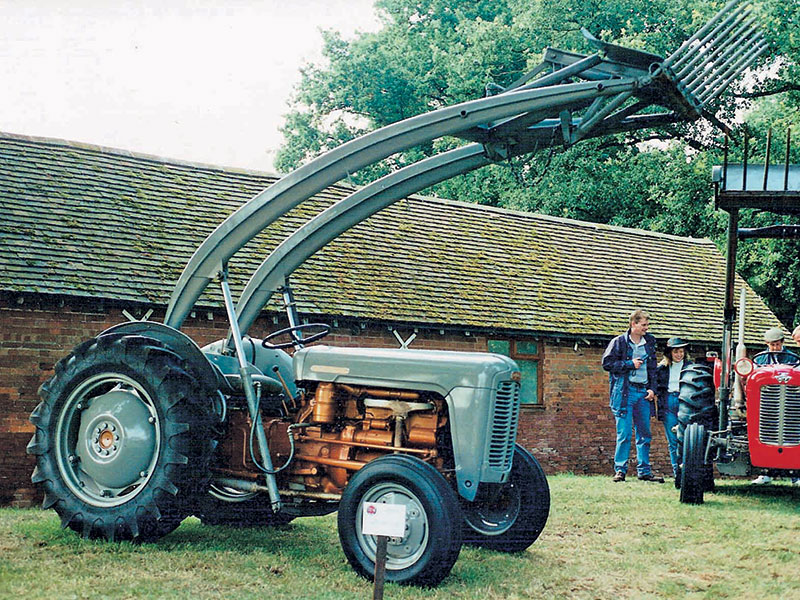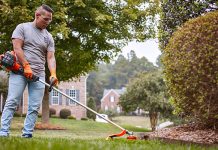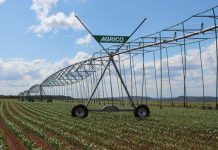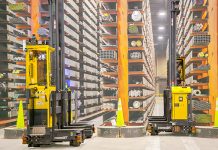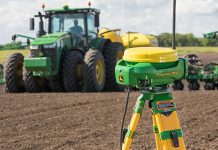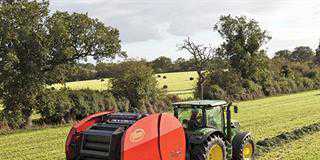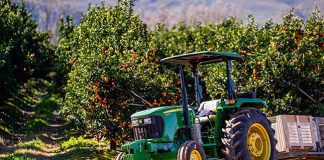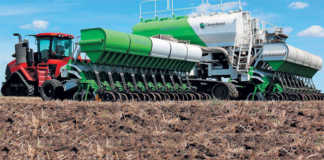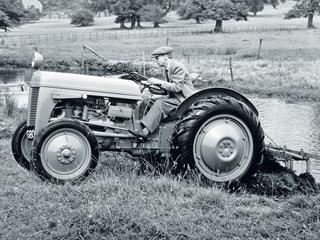
The first Ferguson TE20 tractor, affectionately known as the ‘Vaaljapie’ in South Africa, rolled off the assembly line in Coventry in the UK on 6 July 1946. More than half-a-million were built over the next 10 years.
The system
The TE20 was the brainchild of engineer and inventor Harry Ferguson (seen right above demonstrating the tractor), one of the founders of the present-day Massey Ferguson company. Key to the global success of the TE20 was its unique three-point linkage system. Designated the ‘Ferguson System’, this effectively turned the tractor and implement into a single working unit.
Acclaimed as one of the most important engineering developments of the 20th century, it achieved Ferguson’s ambition of helping farmers to mechanise all aspects of crop production affordably.
‘TE20’ stood for ‘Tractor England 20 horsepower’, and although it had a low engine output (15kW) and was relatively light, the tractor easily outperformed larger units. In addition, it had much lower running costs.
The prototype
Harry Ferguson patented his hydraulic three-point hitch system back in 1926. It was first seen on his Ferguson ‘Black’ tractor, a one-off prototype designed to show how the hydraulic system worked. The original tractor (seen below) is now in the Science Museum in Kensington, London.
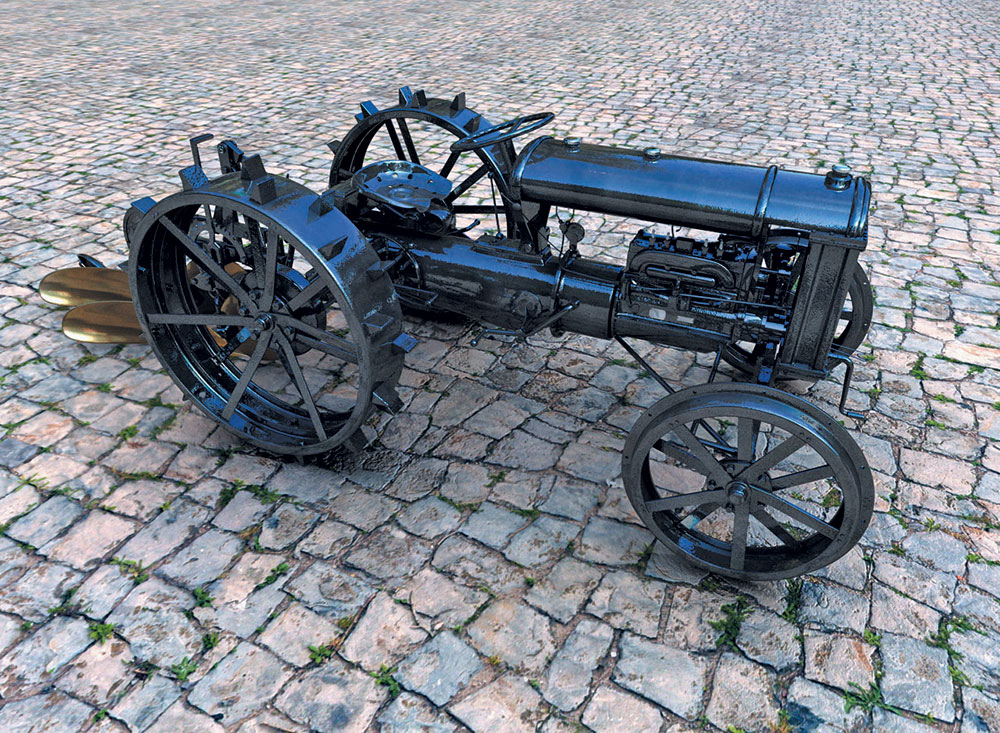
The Brown Ferguson
The Ferguson-Brown Company was formed by Harry Ferguson in partnership with David Brown, and a production version of the ‘Black’ tractor was built at one of the David Brown plants in Huddersfield, Yorkshire, in 1936. A total of 1 356 Model A Ferguson-Brown tractors incorporating the Ferguson System hydraulic three-point linkage were manufactured.
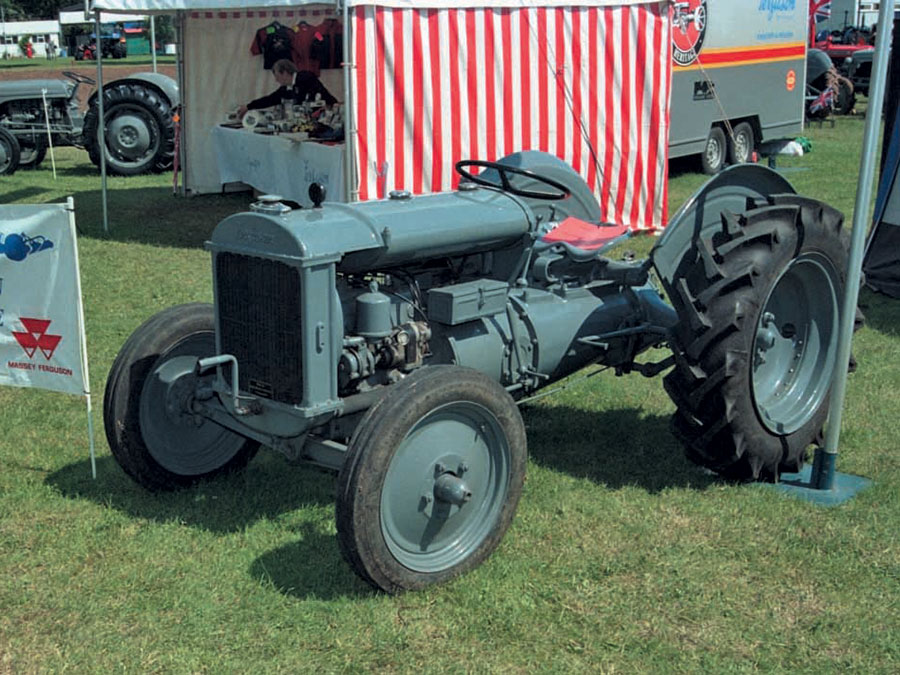
Handshake agreement
In October 1938, Harry Ferguson demonstrated his latest tractor to Henry Ford, and their famous ‘handshake agreement’ led to the introduction of the Ford-Ferguson 9N (seen below) in June 1939. Approximately 750 000 of these tractors were built in the US and it was estimated in 2001 that nearly half were still in use.
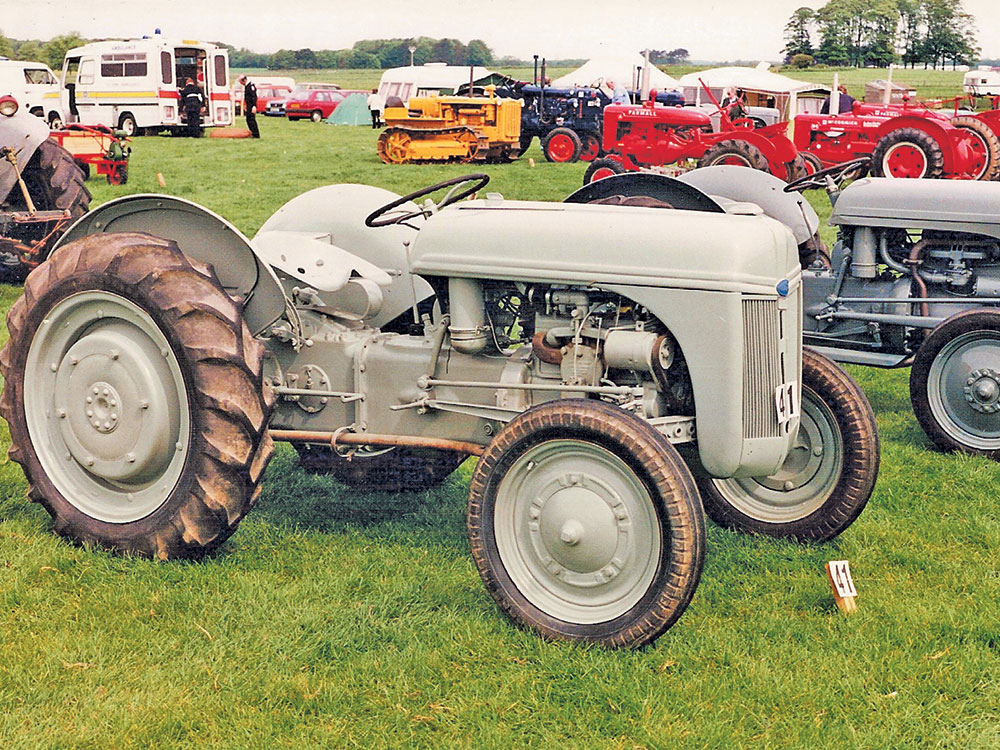
In 1946, the Standard Motor Company began manufacturing the TE20 in Coventry. These tractors would be for the eastern hemisphere; tractors for the western hemisphere would continue to be made by Ford in the US. The arrangement came to an end when Henry Ford died and his successor, grandson Henry Ford II, cancelled the ‘handshake deal’.
Ferguson’s response was to set up a manufacturing operation at Ferguson Park in Detroit to manufacture the Ferguson TO20 (Tractor Overseas 20hp).
Meanwhile, Ford started production of the Ford 8N, incorporating some of Ferguson’s patents. This tractor is claimed to be the US’s best-selling tractor of all time. Ferguson sued Ford for patent infringement and eventually settled out of court after years of costly litigation.
Total production of ‘Ferguson System’ tractors between 1936 and 1956, including the Brown Fergusons, Ford Fergusons, TE20s and TO20s, was approximately one million.
The Ferguson 35
In 1956, the TE series tractor was replaced by the Ferguson 35, painted grey and bronze (on the left). This eventually became the MF35 (on the right in its distinctive red livery) when the deal between Ferguson and the Canadian Massey Harris Company led to the creation of Massey Harris Ferguson, abbreviated to Massey Ferguson in 1958.
